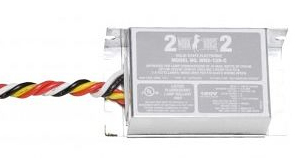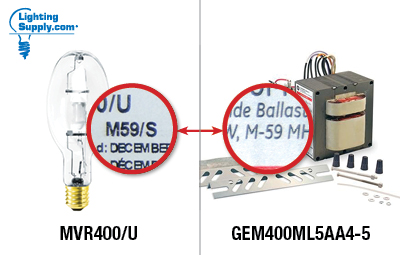|
Need an introduction to lighting ballasts? Here's our complete overview on this topic, in hopes of helping you find the ballasts that best meet your lighting needs. Have we missed something in this guide? Make sure to leave a comment and let us know. We'll make updates to cover as much as we can.
What is a Lighting Ballast?
Let's start with what ballasts are. Outside the lighting world, a ballast is any kind of heavy material placed low in a ship to improve its stability. In this article, any mention of a ballast is about a lighting ballast. Similar to a ship ballast, a lighting ballast provides stability to a light bulb, or lamp.
(Light bulbs are called "lamps" in the lighting industry; we may use the terms "bulb," "lamp," "light," and in some cases "tube" interchangeably to refer to the item you're lighting up with a ballast.) A lighting ballast provides this stability by generating the voltage needed to start a lamp and then continues to regulate the flow or current of electricity during operation. This is because the lamp itself cannot regulate this electrical current and, without a ballast, would quickly be destroyed. What Lamp Types Use Ballasts?
Incandescent light bulbs -- including halogen lamps -- do NOT require ballasts. This is because the electricity flows through a filament that resists or effectively regulates the flow. This resistance is what causes the filament to "incandesce," or glow from the heat. Of course it requires a lot of heat to cause a bright enough glow to light up a room, and this is why incandescent bulbs are so inefficient. The vast majority of energy goes toward producing heat rather than light.
LED lights also do NOT need ballasts, but use a different kind of electrical regulator called a driver. This leaves us with gas discharge lamps, including fluorescent, metal halide, high pressure sodium, low pressure sodium, and mercury vapor lamps. All of these require lighting ballasts. Without going into detail about how these lamps work, each is filled with gases that become excited and emit photons (which we perceive as light) when charged by electricity. Since they do not have a filament to resist or regulate this electricity, the ballast does this work. Types of Ballast Technology
There are two main types of ballast technology: electromagnetic (commonly just called “magnetic”) and electronic.
Magnetic ballasts are an older technology, and they're no longer manufactured for fluorescent lights (due to legislation), though they are for HID lamps like metal halides and high pressure sodium bulbs. The frequent hum and flickering of fluorescent lights in the past was due to magnetic ballasts modulating current at a lower cycle rate. Magnetic ballasts for HID lamps include core and coil ballasts and F-can ballasts. Core and coil are extremely popular for their low cost, long life, and versatility, but they are also noisy; so for indoor applications -- especially in quiet environments -- you would typically want an F-can ballast or an upgrade to an electronic HID ballast. (See the video below.) Electronic ballasts (for either fluorescent or HID lamps) are a newer technology, and they're replacing magnetic ballasts in many settings. They regulate energy more efficiently than magnetic ballasts and therefore run lights at a lower cost. There are also some hybrid ballasts that use magnetic ballast components while being run by some electronics for increased efficiency. Despite the fact that electronic ballasts are a newer, more efficient technology, magnetic ballasts still offer an important benefit: they work well in cold temperatures. Because of this, they continue being used for HID lamps, which are often used in outdoor settings to light parking lots, streets, construction sites, etc.
|
This blog's content is copyright © 2014-19 Lighting Supply.



